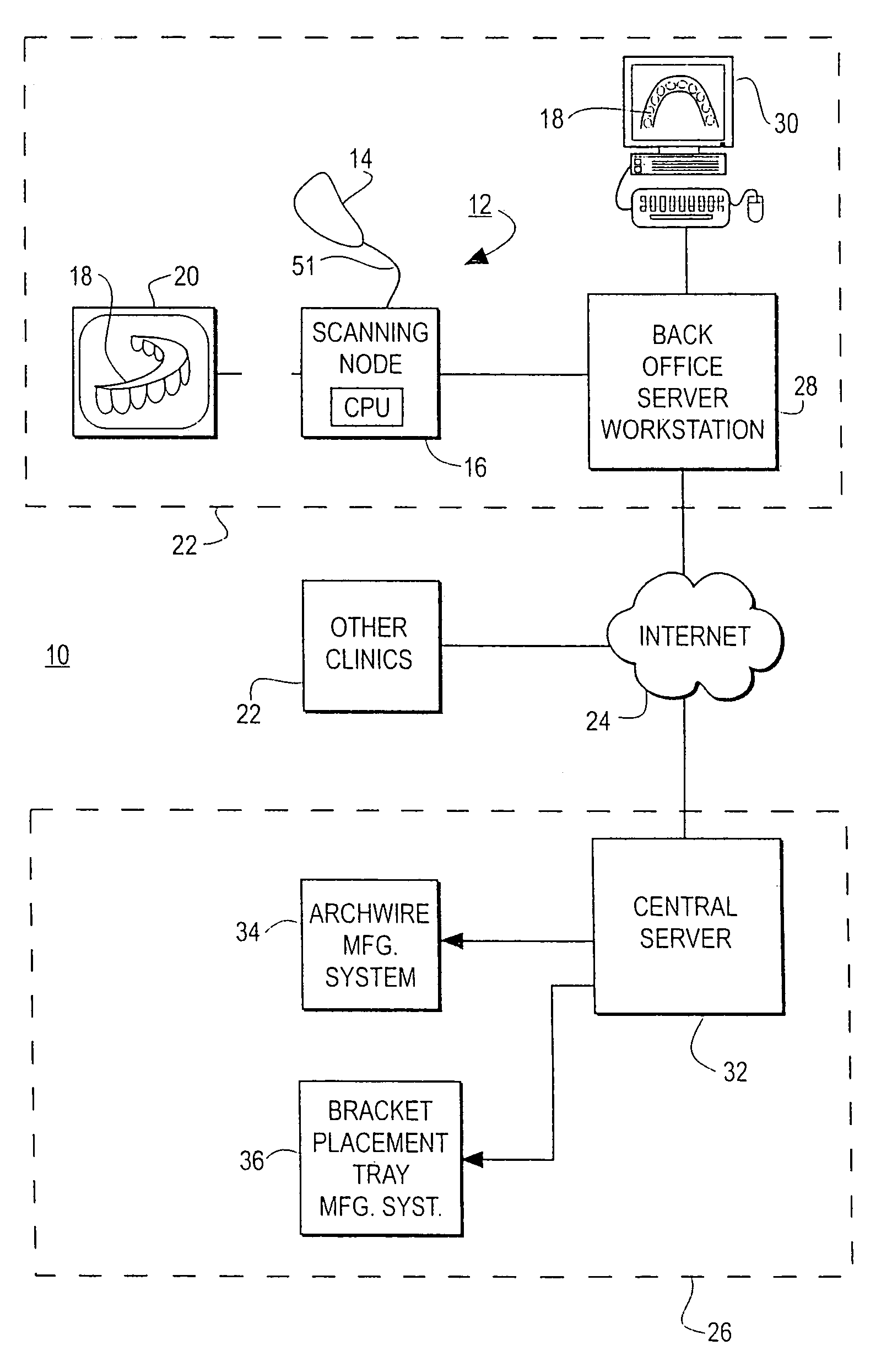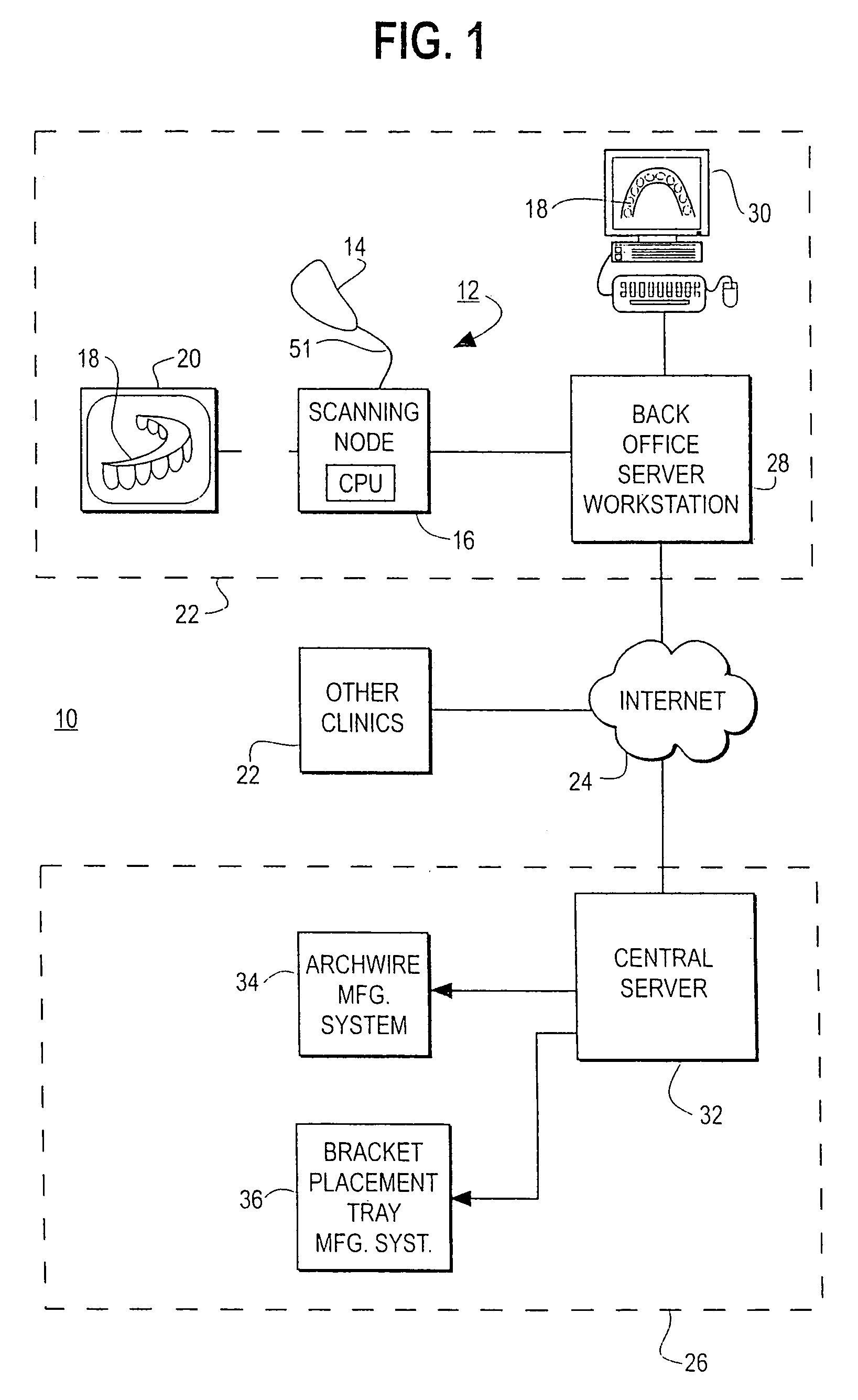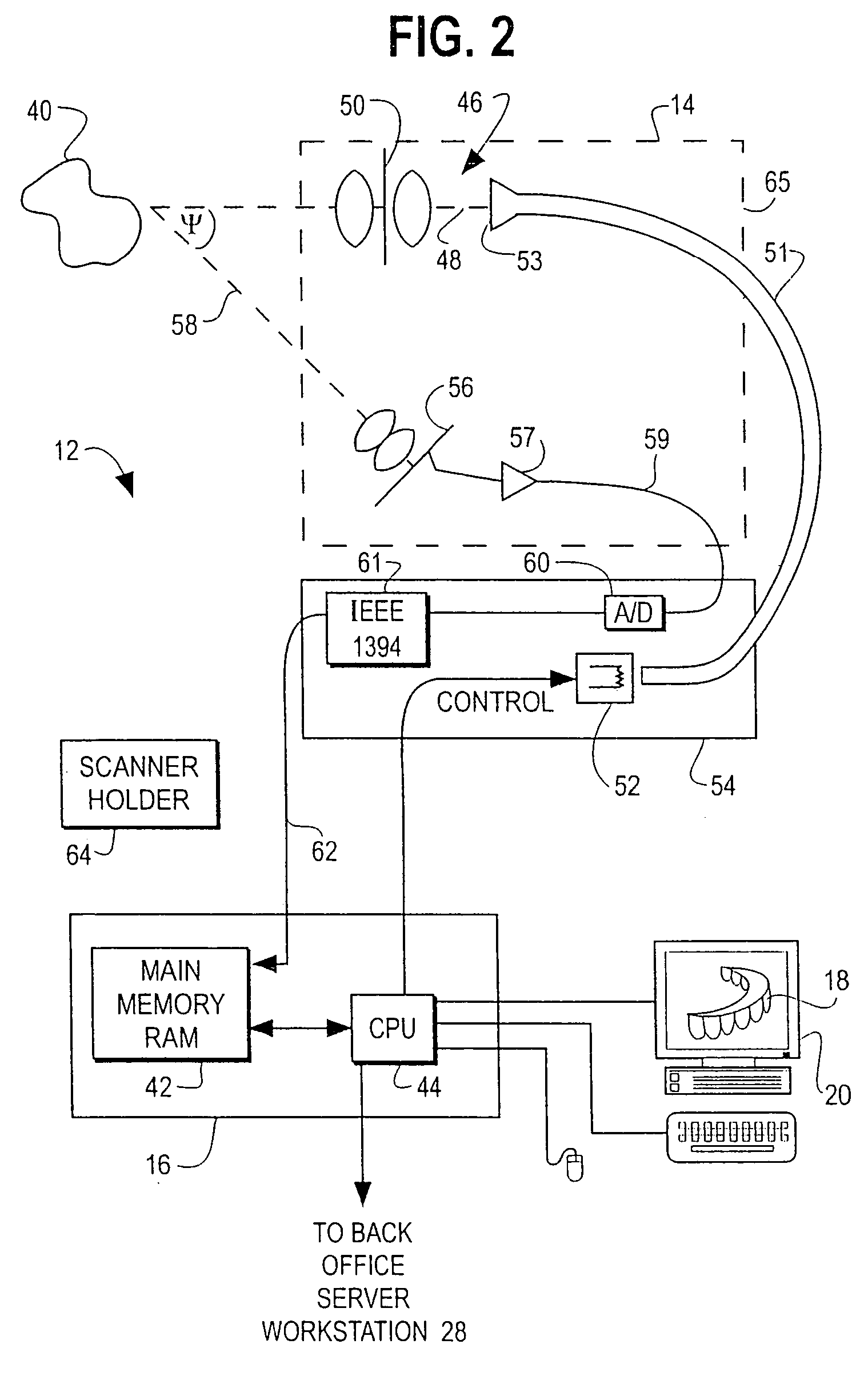Interactive orthodontic care system based on intra-oral scanning of teeth
a technology of intra-oral scanning and orthodontic care, applied in the field of orthodontics, can solve the problems of extreme amount of time and labor, no way to confirm, and too expensiv
- Summary
- Abstract
- Description
- Claims
- Application Information
AI Technical Summary
Benefits of technology
Problems solved by technology
Method used
Image
Examples
Embodiment Construction
[0036]Part 1. System Overview[0037]Part 2. Three-Dimensional Image Capture[0038]Scanner Manufacture and Calibration[0039]Pattern Recognition[0040]Decoding[0041]Derivation of 3-D Point Cloud per Image[0042]Part 3. Generation of Digital Impression[0043]Entry point to registration[0044]Frame to Frame Registration[0045]Cumulative Registration of Entire Jaw[0046]Segment registration[0047]Landmarking[0048]Separation of Teeth into Individual Tooth Objects (tooth modeling)[0049]Part 4. Treatment Planning[0050]Part 5. Appliance Manufacturing[0051]Robot Design[0052]Archwire Manufacture[0053]Claims[0054]Abstract
BACKGROUND OF THE INVENTION
[0055]A. Field of the Invention
[0056]This invention relates generally to the field of orthodontics. More particularly, the invention relates to a computerized, interactive method and associated system for orthodontic treatment. The system includes a hand-held optical scanner capturing 3-dimensional information of objects, interactive computer-based treatment p...
PUM
 Login to View More
Login to View More Abstract
Description
Claims
Application Information
 Login to View More
Login to View More - R&D
- Intellectual Property
- Life Sciences
- Materials
- Tech Scout
- Unparalleled Data Quality
- Higher Quality Content
- 60% Fewer Hallucinations
Browse by: Latest US Patents, China's latest patents, Technical Efficacy Thesaurus, Application Domain, Technology Topic, Popular Technical Reports.
© 2025 PatSnap. All rights reserved.Legal|Privacy policy|Modern Slavery Act Transparency Statement|Sitemap|About US| Contact US: help@patsnap.com



